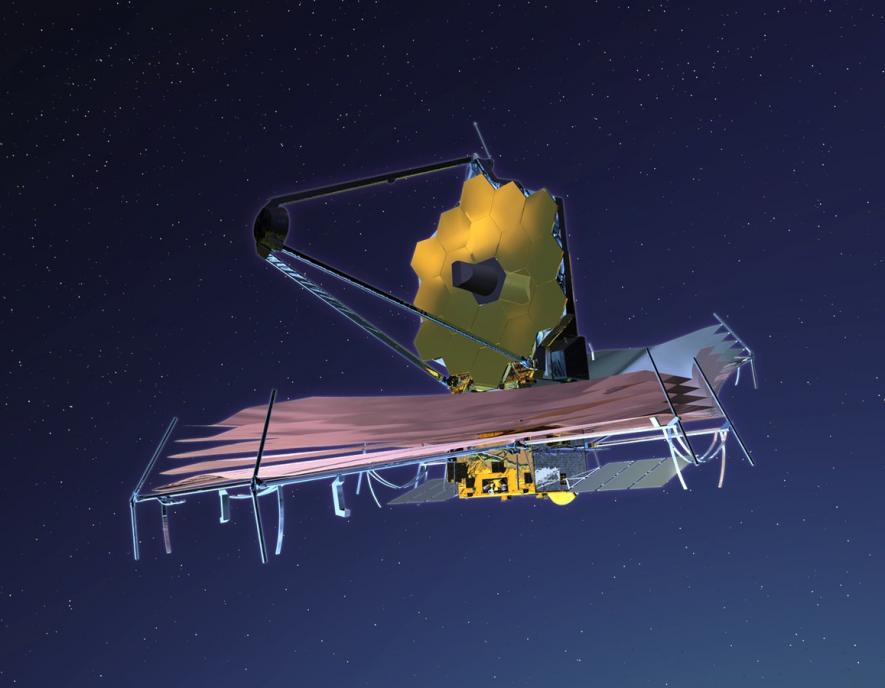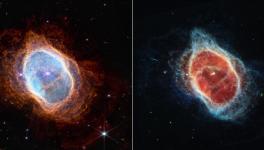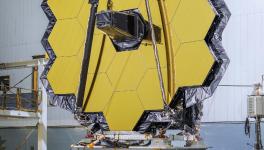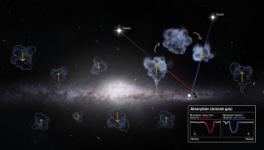James Webb Telescope Could Successfully Detect Exoplanet's Radiation But Found No Atmosphere

Image Courtesy: Wikimedia Commons
The James Webb Space Telescope (JWST), launched to study exoplanets (planets which orbit stars other than the Sun or planets outside the solar system) and other distant galaxies, has successfully recorded the radiation from the exoplanet named TRAPPIST 1b. However, there is a little setback for those who thought the exoplanet would have an atmosphere to host life like the Earth. From the analysis of the radiations detected by JWST, scientists concluded that it does not have an atmosphere.
On March 27, Thomas Greene and his colleagues published their analyses in Nature. Last year, the JWST was busy detecting the heat radiating from the exoplanet. Greene's team, from the Space Science and Astrobiology Division of NASA's Ames Research Centre, analysed them.
Some scientists thought that TRAPPIST 1b would have an atmosphere to support life, which, as the latest analyses suggest, may not be accurate. Greene told space.com in an email, "Some theory groups predicted that the planet would have a dense atmosphere, while others thought it might not. I was more disappointed than surprised to see it had no atmosphere."
The TRAPPIST 1 star system has seven planets in total. Although the possibility of an atmosphere at TRAPPIST 1b has been nullified, scientists urge not to lose hope as the JWST has proven its ability to study exoplanets. There are six more planets in the TRAPPIST 1 star system to study further. So, more observations and information on the star system are expected to come soon. All seven planets of the star system are roughly equal to the size of the Earth and revolve around a star at a distance of around 39 light-years (or 12 parsecs) from Earth.
Astronomers used the mid-infrared instrument, or the MIRI, inbuilt into JWST to detect the radiation from TRAPPIST 1b. Light in the mid-infrared wavelengths is 20 times as much red as human eyes can see. Using the light of this wavelength, astronomers measured the brightness of the planet and the star together. Then they measured the star's brightness alone to calculate the planet's brightness.
According to the European Space Agency (ESA), a partner with NASA in operating the JWST, it is the first time the telescope has detected light emitted by an exoplanet. The analyses suggest that the daytime temperature of the exoplanet is near about 230 degree Celsius or 446 degrees Fahrenheit.
TRAPPIST 1b receives radiation from its star four times as much as Earth gets from the Sun. This made astronomers not expect any conducive environment for life to exist here. Experts opine that before knowing the planets, the stars have to be understood first, which is possible with the ability JWST has shown.
Julien de Wit, an exoplanet researcher at the MIT (Massachusetts Institute of Technology), said in a statement in Nature, "Astronomers should work together to study TRAPPIST-1 with JWST using multiple techniques to understand the star as fully as possible. Otherwise, researchers will struggle to interpret what they see in planetary observations because the star's activity could be contaminating those measurements."
According to NASA, the TRAPPIST 1 star system is the most explored star system besides our solar system. This star system is around 40 light years away from the Sun (one light year is the distance that light travels in a year). TRAPPIST 1 has a star at its centre called the M dwarf star. The speciality about the M dwarf stars is that they are the smallest stars that can burn hydrogen in their cores. The importance of JWST's latest measurement is because the M dwarf stars usually have planets revolving around them, which are of similar size as the Earth.
It is worth mentioning here that there had been previous observations on TRAPPIST 1b with the help of the Hubble telescope and the Spitzer space telescope, suggesting similar results as JWST.
Get the latest reports & analysis with people's perspective on Protests, movements & deep analytical videos, discussions of the current affairs in your Telegram app. Subscribe to NewsClick's Telegram channel & get Real-Time updates on stories, as they get published on our website.




















